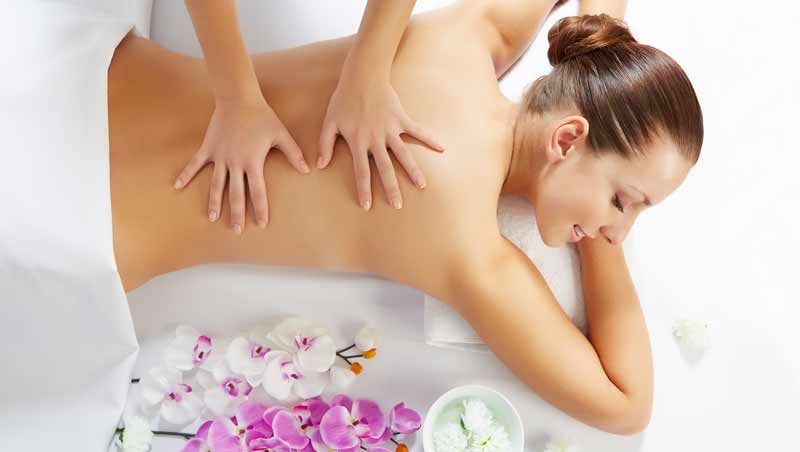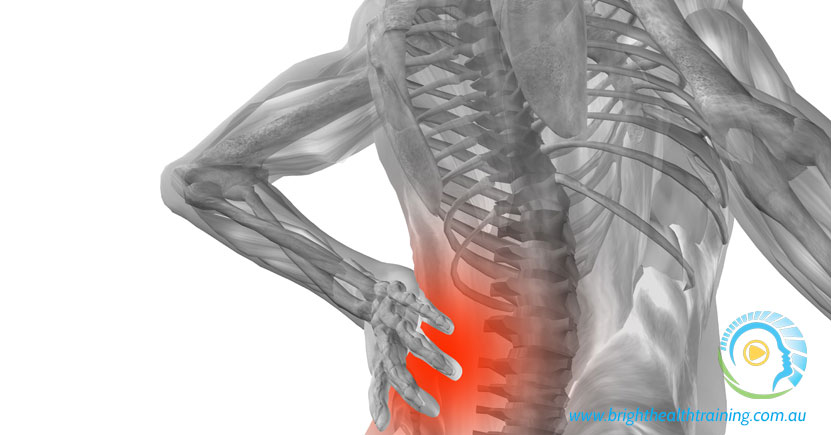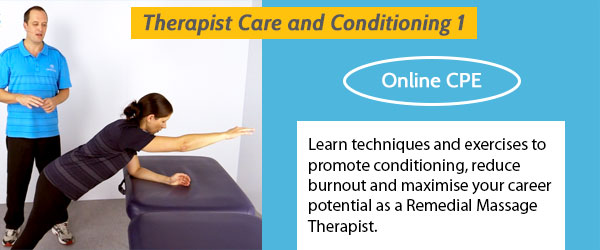My article today challenges everything we know as Remedial Massage Therapists! In one of the largest studies ever held in massage therapy, it was shown that whilst remedial massage and relaxation massage were both effective in reducing chronic back pain, relaxation massage was slightly more effective for pain reduction and demonstrated an increase in function after 52 weeks!
In the Australian massage world the status quo is very clear, if you want to be the “real deal” in massage you have to be a “Remedial” Massage Therapist. Remedial massage is recognised by private Health Funds as the base requirement to provide claimable services. On the flip side, relaxation massage is usually associated with day spas and beauty clinics and often perceived as “body polishing’, mostly benefiting the skin (body scrubs and aromatherapy treatments).
By that logic, remedial massage should be more effective in managing chronic lower back pain, right? According to the research, that is not entirely correct! Published in the Annals of Internal Medicine, one of the largest studies in massage therapy, looking at over 400 patients, has put significant doubt into the supremacy of deep tissue massage techniques being any more effective than a relaxation massage for the relief of chronic lower back pain.
Join the Bright Health Training newsletter
Rethinking why massage works
So this leads to a very simple question, why is relaxation massage more effective at pain reduction than deeper treatments? Based on the this particular study, the answer is still unknown. The authors suggest that the answer may exist in the effect that relaxation massage has on the nervous system.
In 2001, a Professor of Psychology Ronald Melzack published a paper describing what he called the neuromatrix. To summarise the paper, he proposed that the nervous system in an acute phase, responds to pain in a mechanical fashion. In other words, stimulus directly triggers the pain response. With chronic pain things are different, it has been well documented that people can still experience significant pain even when the physical stimulus no longer exists. It is as if the body has learned to feel pain.
Melzack suggests that to treat chronic pain the original cause must be identified and treated, but additionally, the nervous system’s chronic response to pain also has to be treated. It may well be the case that this is what relaxation massage does better than deeper styles of massage?

Consider for a moment that your back has started to “think” that every sensation is painful, what would be more effective to change its “thinking”? More pain, as experienced in deeper styles of massage, or gentle soothing stimulation that feels “nice?” While it is difficult to answer for certain, regular relaxation massage that allows a client to relax, find a sense of calm and then experience a gentle, comfortable and pleasurable sensation through a painful area, might be a more effective method in treating chronic pain than remedial styles of massage.
But isn’t it all about Biomechanics?
There certainly doesn’t seem to be any change in thinking regarding acute pain. It is relatively straight forward in this instance – a stimulus/pain response is largely mechanical. There are definitely factors such as biochemical imbalance and the psychological experience of pain that need to be taken into account, but at this point in time it is still preferable to perform remedial massage treatments for acute (and chronic) pain. And it is likely that with acute pain, mechanical treatment will be the most effective.
So using a biomechanical model for acute pain management is certainly still recommended at this time and is unlikely to change in the future. However, as Remedial Massage Therapists (and this is the same for many other Manual and Physical Therapists) it has been drummed into us that pain management is all about biomechanics. While this is still largely true, we need to start thinking in broader terms. Understanding the impact and behaviour of the nervous system and how it responds to pain is a good start.
Another important area of research into chronic pain is called the biopsychosocial model of chronic pain and this model has been shown to be effective in understanding how the broader impact of an individual’s current psychological state, social situation and even genetics, affects their experience of chronic pain.
How to integrate this research into your treatments
So, the next time you have a client presenting with chronic pain, consider for a second what it is that actually needs treating. In many cases, there will be a multitude of factors that include biomechanical imbalance and dysfunction. But it is also very likely that the nervous system of your client needs to be relaxed. Maybe, adding more pain to an already painful back is not what your client needs?
Perhaps, when performing your assessment, the findings do not necessarily match your client’s experience of pain. In this instance, it may be most beneficial to focus on providing a relaxing, calming style of treatment that might include gentle myofascial release or even Swedish strokes as a tonic for the nervous system. And know that when you address the nervous system in a variety of relaxing moves, the research backs you up!
References
(Daniel C. Cherkin, PhD; Karen J. Sherman, PhD, MPH; Janet Kahn, PhD; Robert Wellman, MS; Andrea J. Cook, PhD; Eric Johnson, MS; Janet Erro, RN, MN; Kristin Delaney, MPH; and Richard A. Deyo, MD, MPH) A Comparison of the Effects of 2 Types of Massage and Usual Care on Chronic Low Back Pain: A Randomized, Controlled Trial, 2011.



Comments 9
This is a very good article that supports what I have practiced for many years. For our bodies to accept change when we are in pain there must be some gentle introduction to therapeutic touch. I agree that eventually some deeper work may have to be performed, however, not necessarily on the first visit or even the second. I have never seen the need to put a client through excruciating pain. From a Lecturers point of view I am saddened to see students getting exciting about putting elbows in trigger points and using the “no pain, no gain” attitude and wanting to forget all the basic, gentle techniques they learn in their initial massage classes.
I have utilized Swedish massage as a first therapy for over 20 years and my clients have never come out bruised or beaten and I often found that Swedish massage, done well, in the right areas,accompanied by a few well placed MFR techniques and stretches ensured that when the client returned they were vastly improved and then I could concentrate on what was left.
Even at this point however, the least amount of pain needs to be elicited. If you put someone in too much pain they will tense against your efforts and surely this is counterproductive to an effective treatment. Don’t get me wrong, remedial techniques are very useful, but they don’t have to be the first choice in a lot of cases . I wonder if a few more minutes spent on listening to the client and completing a more in-depth physical assessment would assist the therapist to realise that thumbs, elbows and knuckles may not be the only way to get a result?
I am very happy that you have highlighted this research, as a therapist I have seen the results over and over of actually being gentle and specific with treatments and not just launching in with every hard and painful technique that can be remembered.
Hi Kim,
Thank you for your comments and insight. The wonderful thing about research like this is that it can validate well what has been demonstrated within a clinical environment for many years. Opinions about what is “the right way to do things” does not enter into it. As you point out, many students believe, and are taught, more pressure equals better results. Hopefully we can dispel this myth, whilst realising there are times when firm pressure is appropriate and indicated. When performing massage for chronic pain, relaxation and “retraining” of the nervous system should probably be the first step.
Aran
i wish i didnt have back pain 🙁
Hi Elvia,
Have you tried massage for lower back pain? Or have you found other methods that give you relief?
Aran
i think the best way to fix back pain is lots of rest, that helps me usually
Hi Ashly,
Rest may in fact be the best method for some, however it is worth noting that massage was compared with rest in the original study and massage came out as more effective! Have you tried massage for you back pain, I am guessing you have?
Aran
I’ve been on both ‘ends’ of this, as a patient dealing with a spinal injury and chronic back pain, and as a therapist.
As a patient, it’s not nice when a treatment hurts more than what pain you came in with and it gets incredibly frustrating when you get a therapist who just wants to ‘bash you up’ each week/fortnight/month to get results.
What I’ve found from a patient’s P.O.V – having an awesome MST work on me for the past 6 years – is, while deep work is sometimes needed, lighter work can have a really great effect in getting the muscles (and the whole body and mind too!) to just chill out and stop locking up.
As a therapist, it’s frustrating to have clients come in expecting (and sometimes wanting!!) a treatment to HURT. I can’t understand how someone wanting to get rid of pain, wants to have pain inflicted? Yes, there can be some discomfort when you hit a trigger point, but it’s not supposed to hurt! Just recently, doing a firm-but-gentle and slower treatment on a lady with Fibromyalgia, she commented that she really enjoyed it, as she felt things releasing and it was still NICE to have a treatment – not painful and stressful like treatments she’d had with other therapists in the past.
It’s also a lot easier on my body not having to ‘bash’ someone for an hour 🙂
Hi Kathryn, that is really nice to hear. One of the key points that we all as massage therapists need to become aware of is that the effect that the client’s brain has on their own body is much greater than any effect that the massage has. Mechanical pressure can trigger change in a clients body but it is not the case that more pressure is better. In fact it is more the case that the right amount of pressure will have the best effect. It is a tough mind set to change and I for one struggle with this concept daily, especially when a client has an expectation of a strong treatment. You sound like you have already got it clear in your mind what you are really doing when it comes to massage. Good luck and keep up the good work!
Aran
Learnt from the best, eh? 🙂